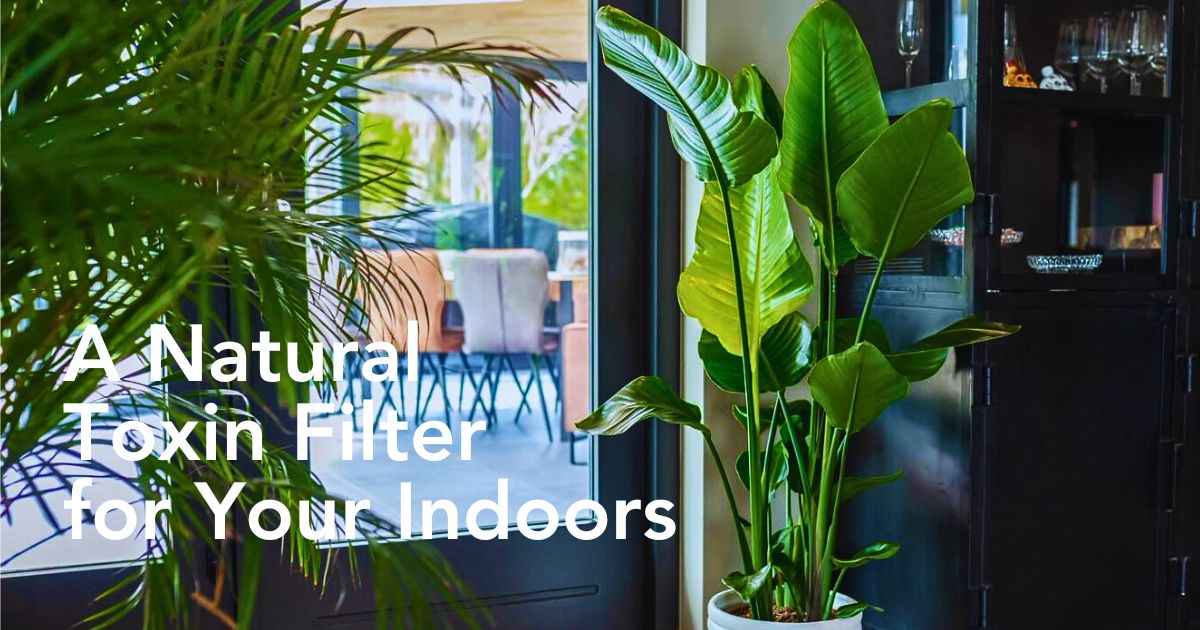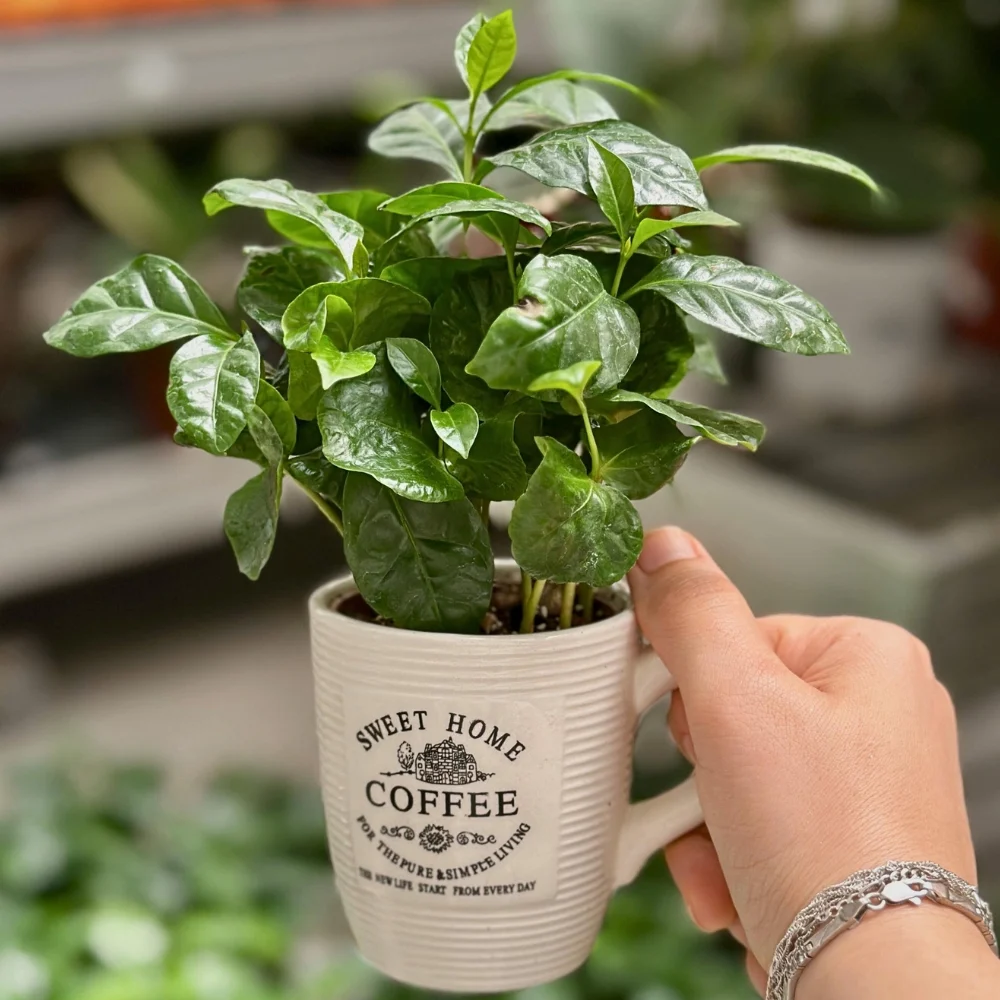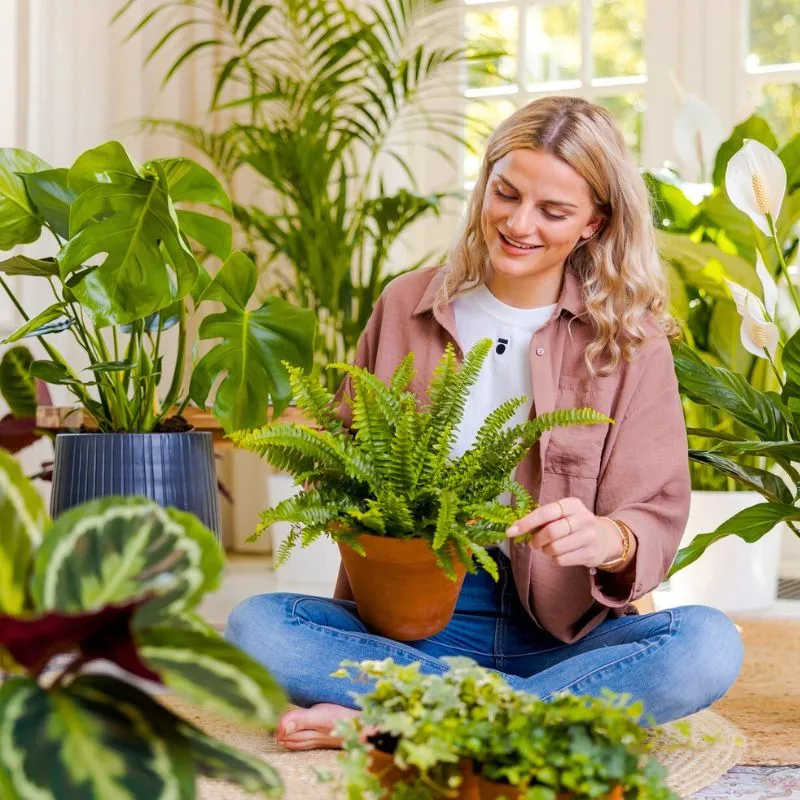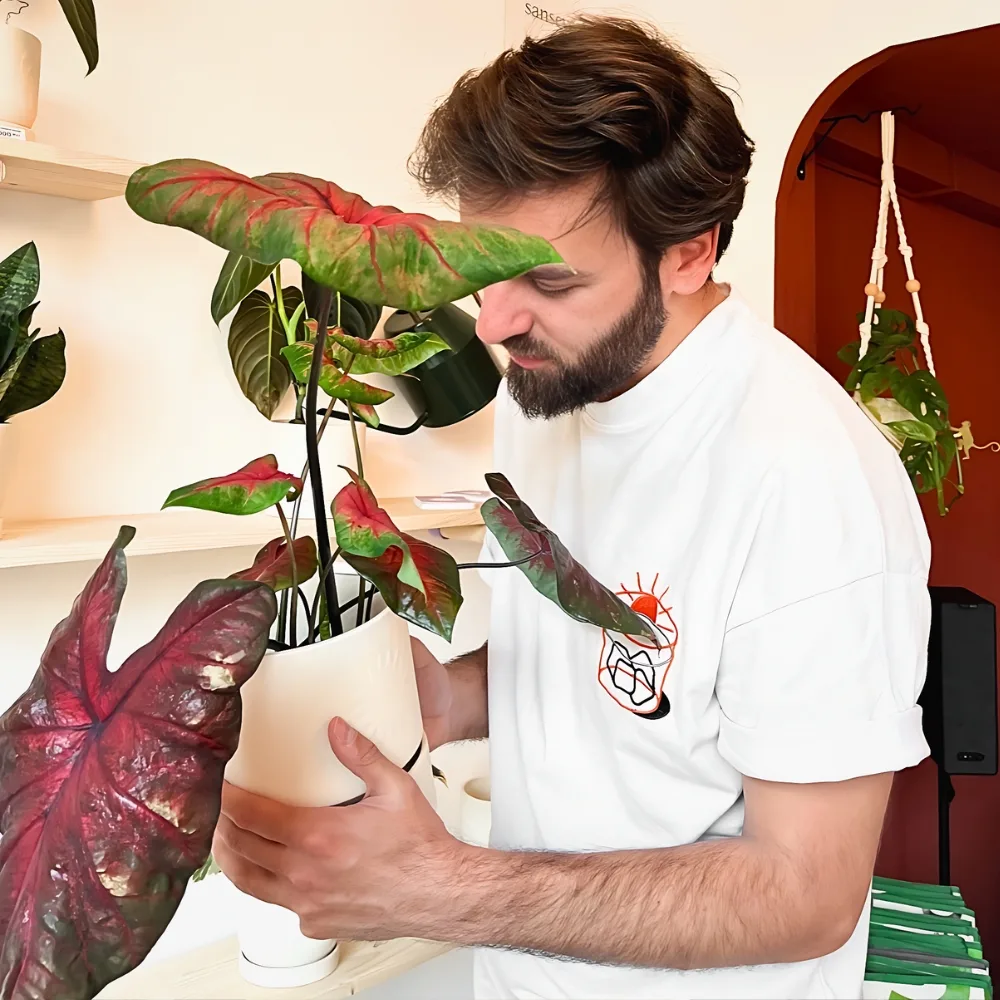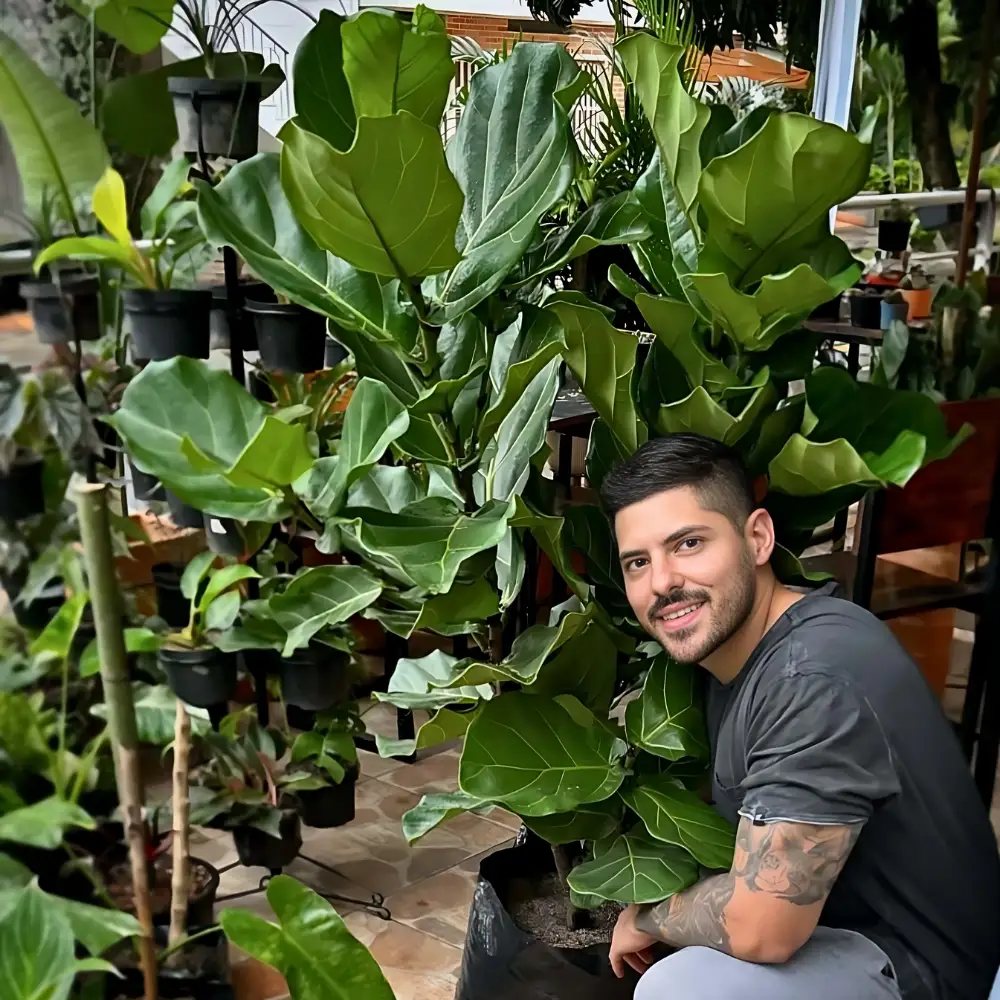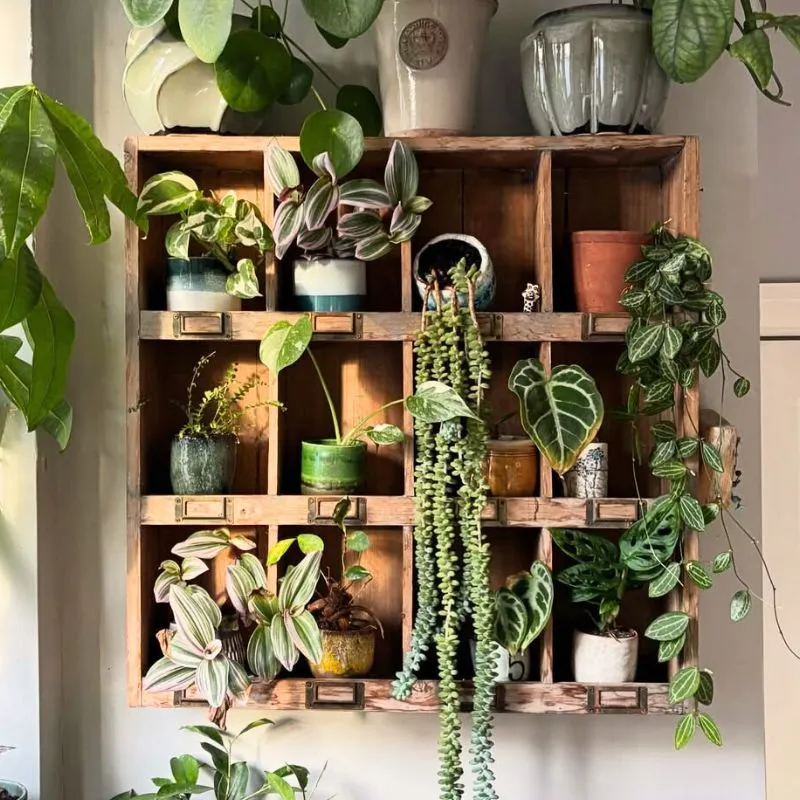Found naturally growing within the coastal regions, forests and dune vegetation of South Africa, particularly in the Eastern Cape, KwaZulu-Natal—where it is considered native—extending into southern Mozambique, Botswana, and Zimbabwe, Strelitzia nicolai, also known as the white-flowered Bird of Paradise, is one of those houseplants that offers all you'd want in your indoor plant collection. With large leaves packed with easily accessible stomata, this giant Bird of Paradise makes for a natural toxin filter.
Research has shown that its broad lamina can extract formaldehyde and benzene faster than many comparable ornamentals, while releasing generous moisture that moderates indoor humidity. Still, this exotic houseplant offers all the aesthetics of the tropics. Plant specialists, Air So Pure, whose range is made up of air-purifying houseplants with proven health benefits, know all too well about these qualities, which is why they vouch for this tropical plant, making it essentially the kind that impresses with its large leaves, and an air that replicates the atmosphere and beauty of a tropical paradise.
Everything to Know About Strelitzia Nicolai
While the most well-known visual version of the Bird of Paradise plant is the one featuring bright orange flowers, known as Strelitzia reginae, the Strelitzia nicolai ensembles the same shape and other qualities, but the most significant difference is the color of the flowers. Strelitzia nicolai is the 'giant white version' of the Bird of Paradise.
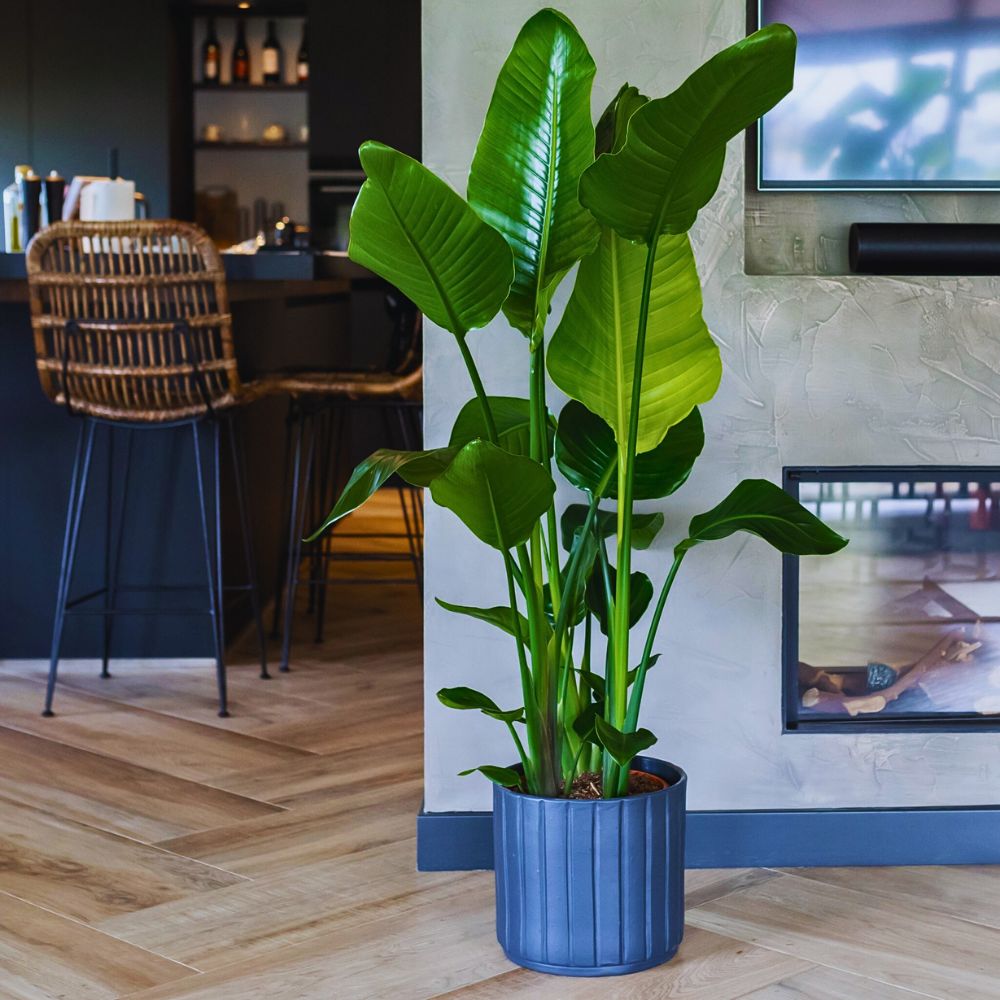
Strelitzia nicolai evokes the essence and drama of tropical forests with banana-like fans of foliage and white-and-blue crane-shaped flowers. Its combination of architectural presence, straightforward care, and year-round evergreen color makes it a favorite for interiors everywhere. Of course, not to forget its health and well-being benefits. All these make it quite favored among plant lovers.
What's Important About Growing Strelitzia Nicolai as an Indoor Plant
What is there not to love about this indoor beauty? It has so many perfections, like its appearance, the way it delineates spaces, and the touch of tropical elegance and flair it brings to any setting. And, of course, its ease of maintenance. They are all qualities that capture the attention of many plant lovers. That's why it is so lovable.
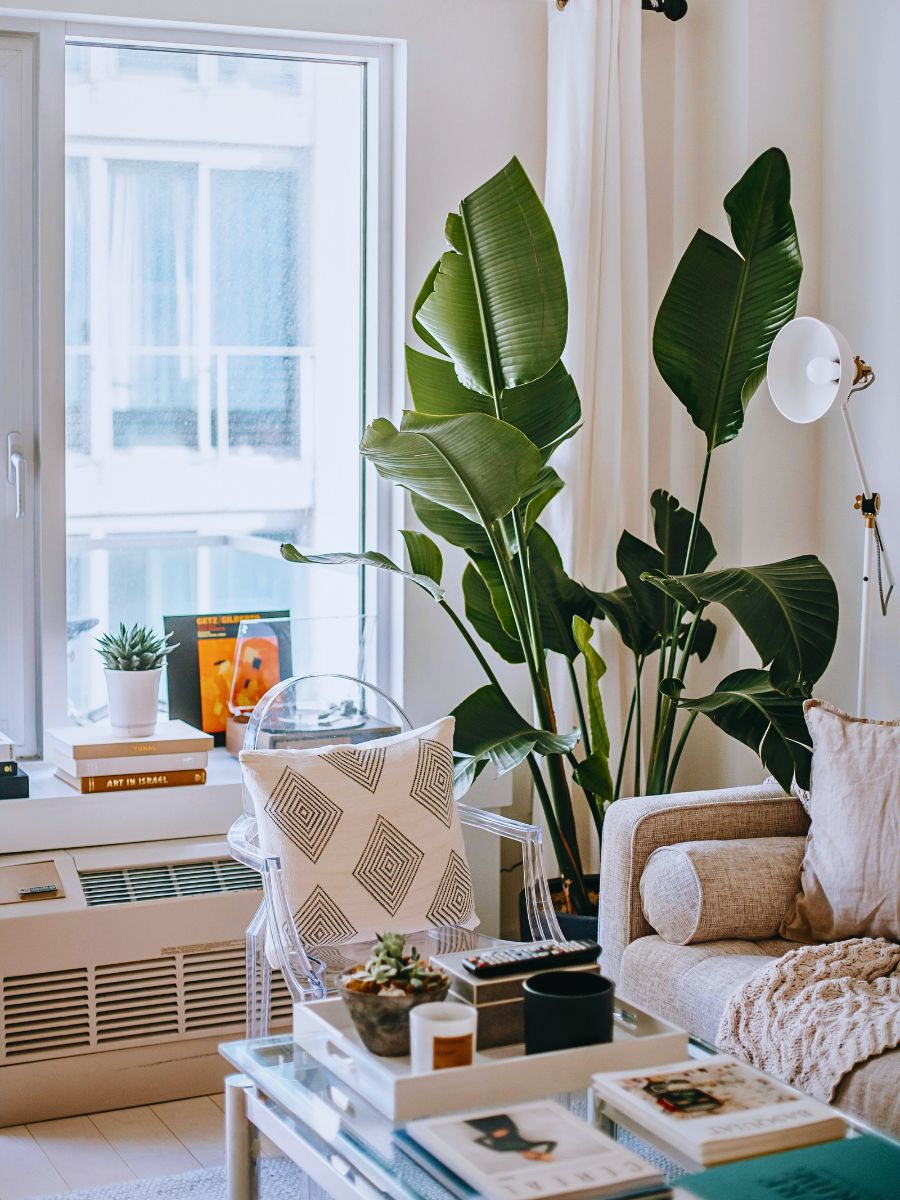
Strelitzia nicolai will repay you month after month, from summer to winter, with its magnificence. This houseplant hardly lets one down, just make sure to have the right space before purchasing a Strelitzia nicolai because it often grows BIG! Also, note that this giant Bird of Paradise thrives in specific environments that ensure its healthy growth.
Air So Pure advises:
"A bright location with plenty of indirect light makes it happiest. Avoid direct sunlight if you want to get the most beautiful leaves. Direct sunlight makes the leaves age and tear quickly, resulting in a rougher appearance."
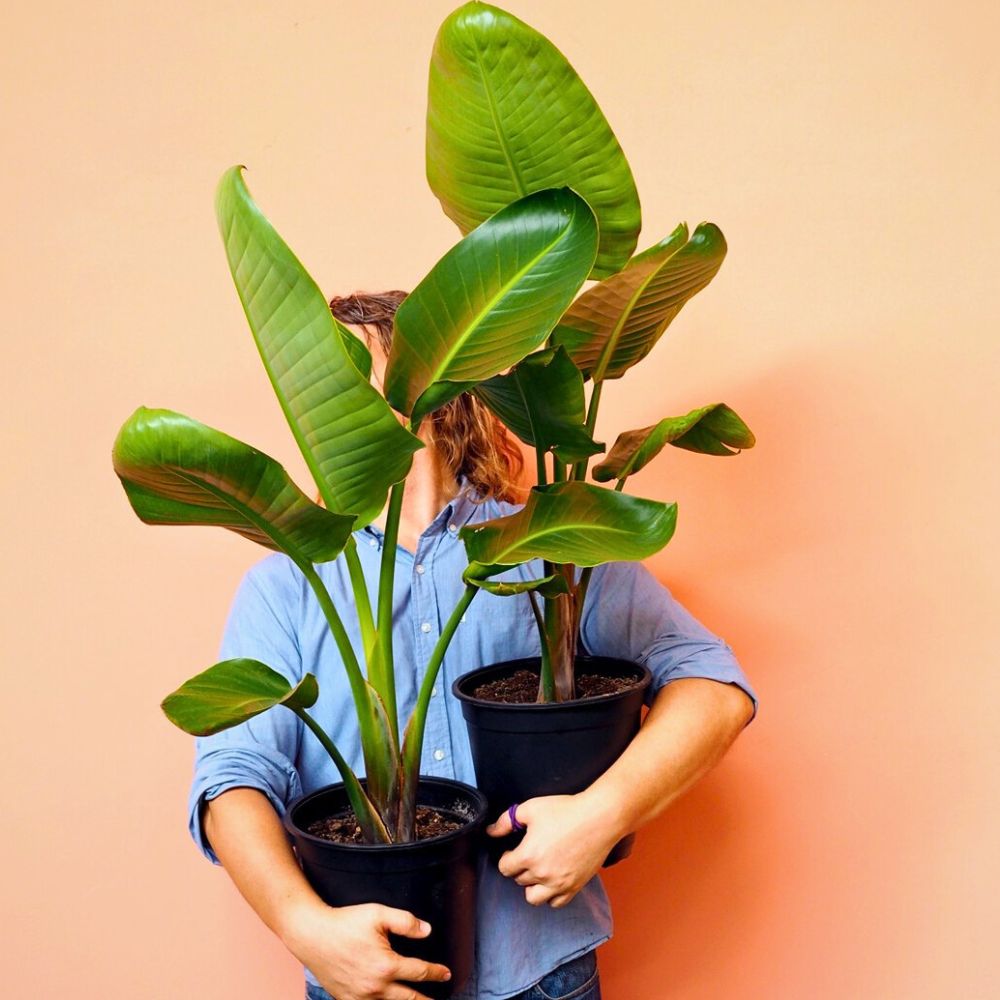
Some Facts About Strelitzia Nicolai or the Giant White Bird of Paradise
Originally, the giant white Bird of Paradise has its natural habitat in the coastal forests of South Africa and is a member of the Strelitziaceae family. The intriguing thing about it is that one can only find three of them in the genus:
- Strelitzia caudata
- Strelitzia nicolai
- Strelitzia reginae
Of course, the main show-stealer on this occasion is the Strelitzia nicolai. This plant has banana-like leaves that grow from clumping stalks arranged into a leaf fan position on the uppermost part of the trunk. Another fascinating aspect about them is the outer leaf splitting, which makes it look like a giant bird with white flowers and a dark blue tongue. These unique features are the main reasons why this plant can be found in many households and gardens.
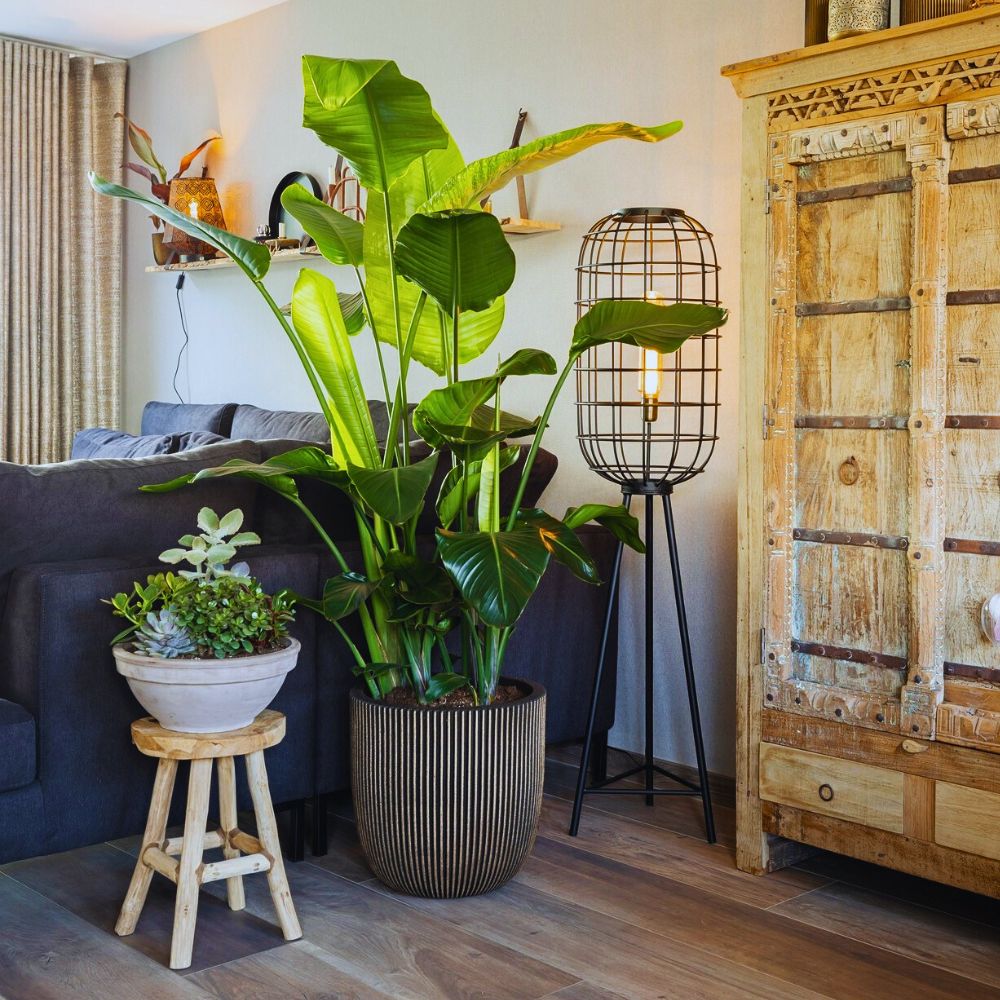
See also: 'Bird of Paradise - Is the Strelitzia the Queen of the Indoor Tropical Plant World?'
Also, did you know that a mature Strelitzia nicolai plant can reach the impressive heights of up to 6 meters (20 feet) or more than six meters, a quality that also makes it a popular plant for gardens? However, this tropical houseplant is mostly found in indoor gardens that can contain it. Furthermore, this exotic plant is sometimes known by other names, including 'wild Cape banana', 'white-flowered wild banana', 'Kaapse wildepiesang' (Afrikaans), and 'isigude esimbalimhlophe' (Nguni).
The Symbolism of Strelitzia Plants
The Bird of Paradise plant is the ultimate symbol of paradise and freedom. Due to its tropical nature, it symbolizes freedom and joy. Although they are best known for their bright orange and blue colors, their flowers can also be white, as featured in the Strelitzia nicolai variety, but the symbolism at the end of the day is the same.
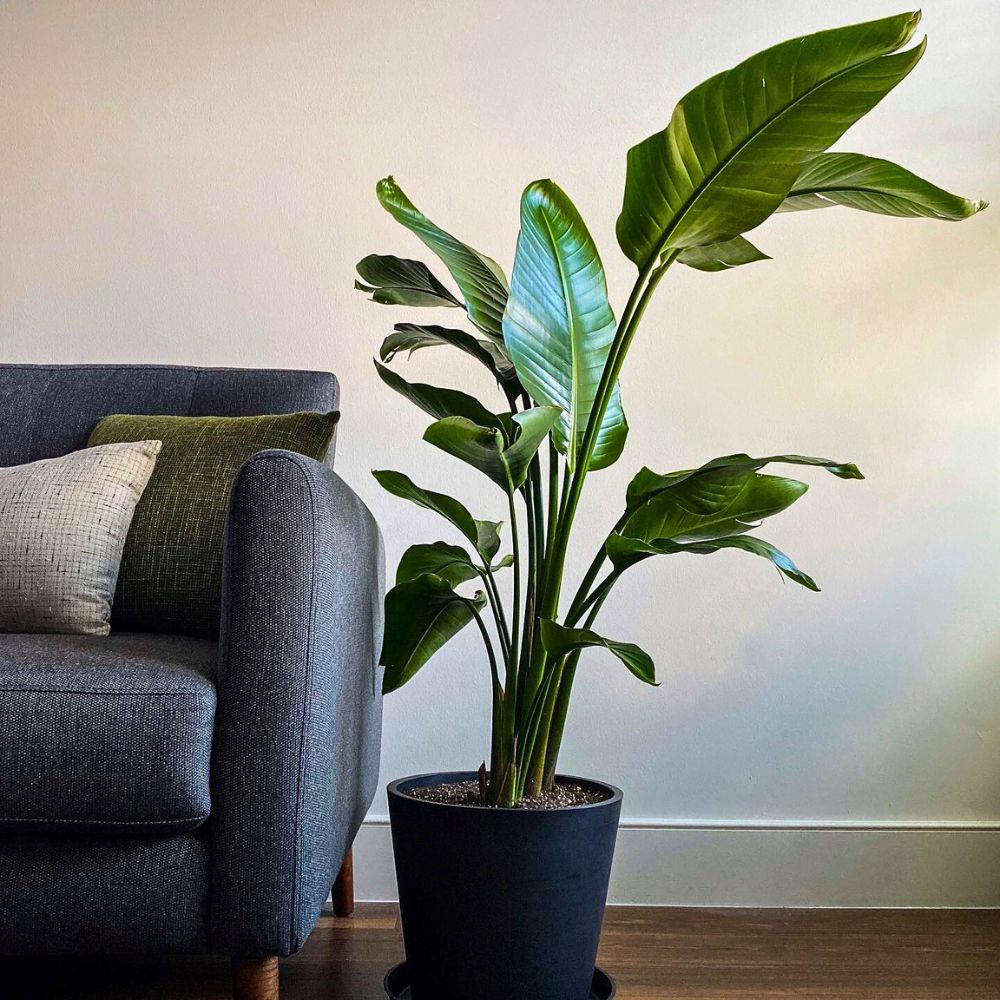
Strelitzia nicolai is a plant that will bring positive feelings to your home, as this tropical houseplant embodies the spirit of exotic beauty, with its majestic presence that symbolizes the promise of happiness and the allure of a tropical paradise.
How to Care for Your Giant White Bird of Paradise
If you are ready to plant and care for Strelitzia nicolai in your home's indoor space, then you're in the right place. For its survival, longevity, and pretty looks, you need to be precisely aware of its care routine. Proper plant care is essential to maintain the vitality of this giant houseplant and ensure that it thrives in its environment. Also, as you embark on this journey, remember that each step in the care process contributes to the overall health and beauty of your tropical houseplant.
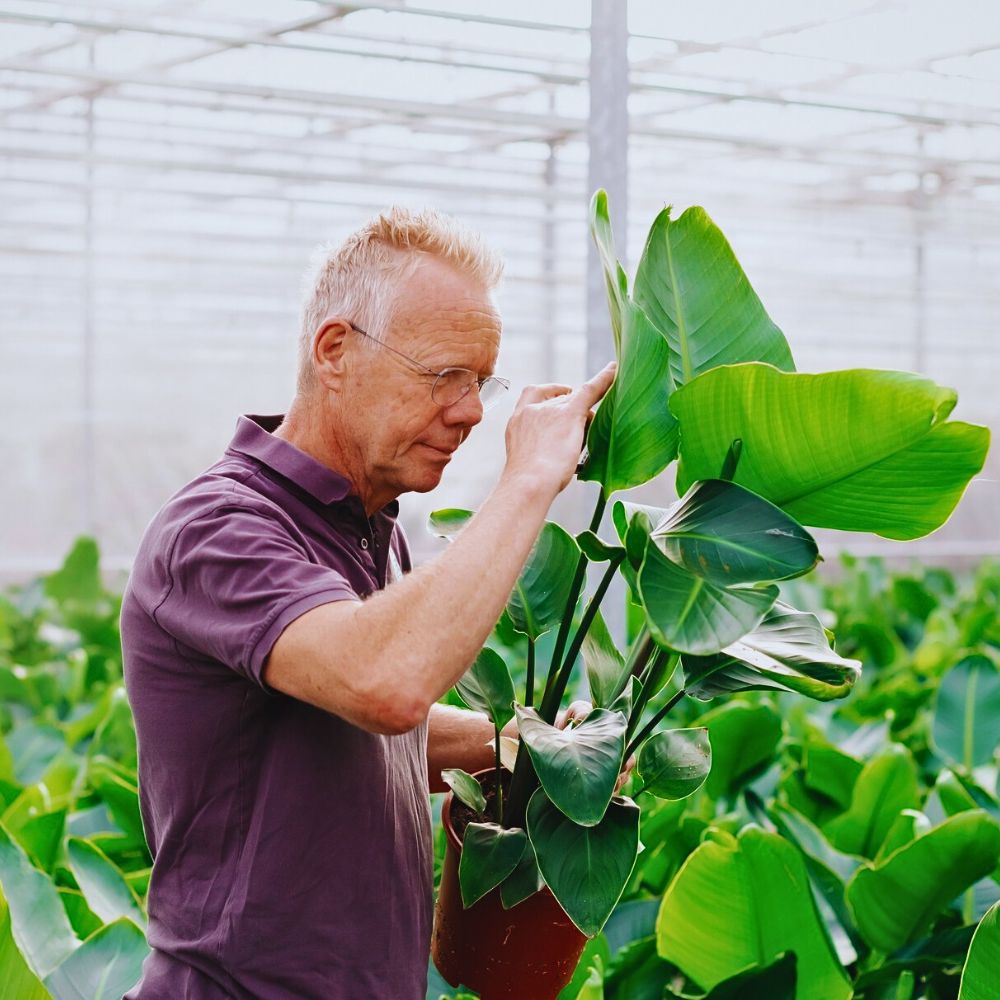
Strelitzia Plants Don't Need Direct Sunlight
Place your Strelitzia nicolai plant away from air vents and drafts where the plant will receive at least four hours of southern, western, or eastern exposure. So you can consider your west-facing window a great spot to expose it to the right amount of direct sun. Though it's obvious, it depends more on the architecture. Although Strelitzia nicolai can handle medium light levels, intense light is always preferred because it is necessary for long-term growth. So for this gorgeous plant to thrive, the more light it receives, the better.
Always keep that in mind! This ensures that your white bird will grow robustly, showcasing its impressive size and vibrant flowers. While it can tolerate low light conditions, positioning it in a bright spot enhances its growth and encourages the development of new leaves.
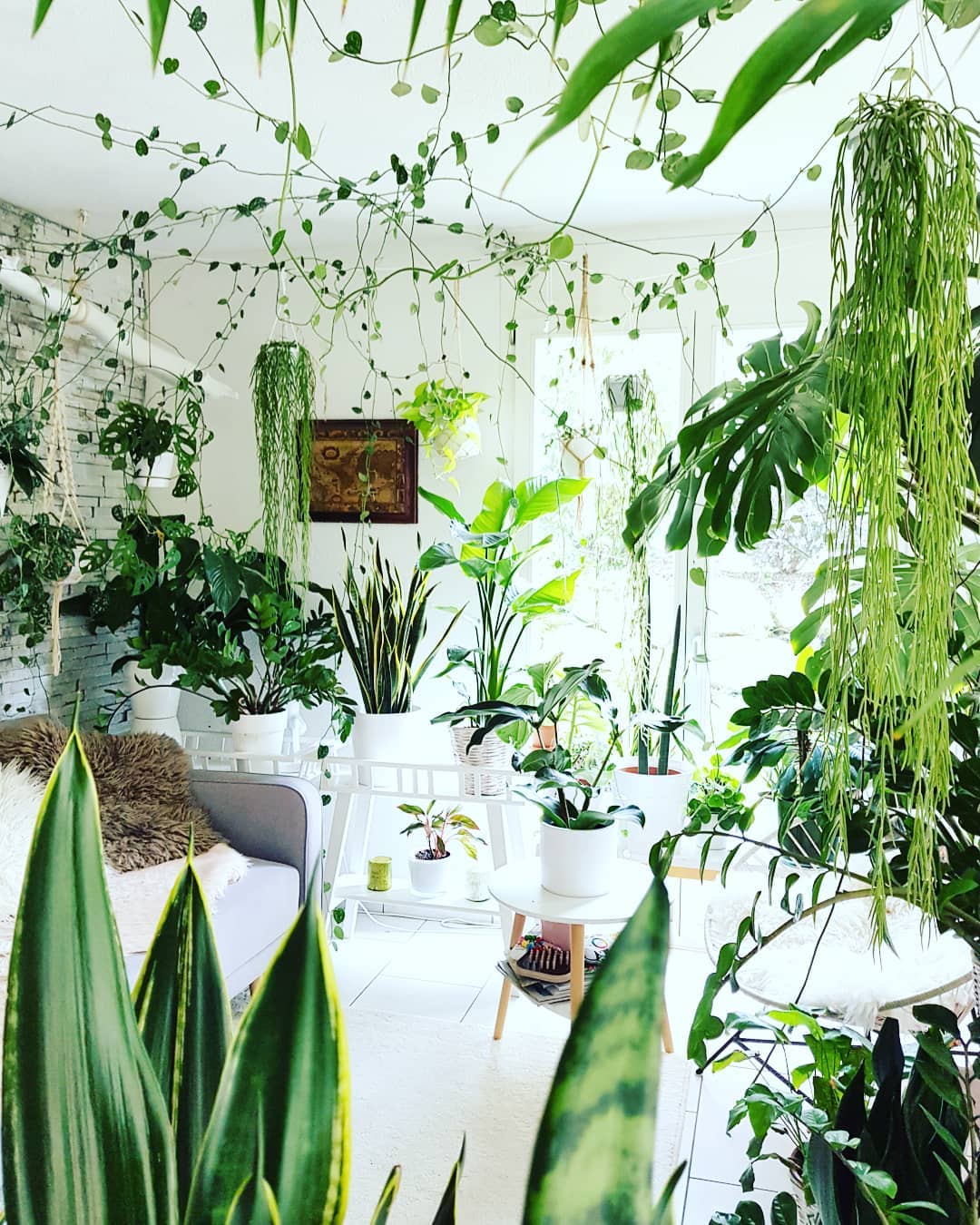
Soil and Water Requirements of Strelitzia Nicolai
Always evaluate your plant's watering requirements as soon as you get one. It is important to check the soil's moisture content first to make sure it isn't wet directly under the surface before giving your plant a drink. A soil probe is a very practical equipment that can be used to aerate too-damp soil as well as assess the soil moisture levels deep within a planter. The ideal conditions for Strelitzia nicolai are moist but not soggy soil and a little bit of air space between waterings. While being careful not to overwater, try to prevent the soil from drying out completely inside the pot.
It is also important to note that the Bird of Paradise goes through a 'resting' period and needs less water during the winter when there is less sunshine available. If the plant is not close to a dry heat source, you can reduce the amount of water provided from October to February. In general, changing the amount of water delivered is preferable to changing the watering frequency. This routine helps prevent root rot and ensures proper drainage, which are crucial for the health of your houseplant.
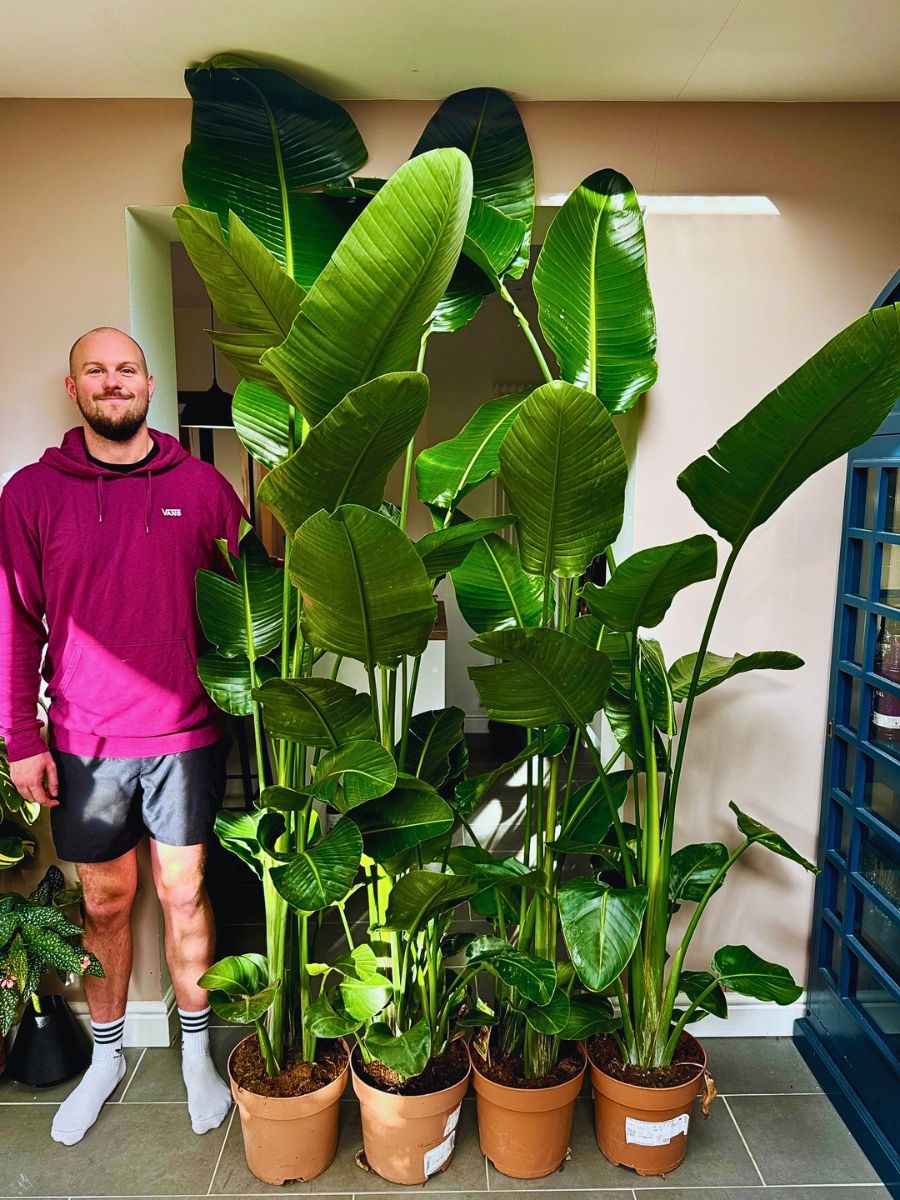
White Bird of Paradise Plant Fertilization Requirements
Feed the plant with a diluted liquid fertilizer every two weeks during the growing season. Alternatively, and especially if grown outdoors, you can cover the soil with a 2.5 cm layer of organic compost. Scrape the compost into the top layer of soil, then water thoroughly. This nourishment supports the plant's new growth and helps maintain its lush appearance. Regular feeding, especially during the growing season, encourages flowering and contributes to its robust health.
What Temperature and Humidity Levels Suit Strelitzia Nicolai the Best
High humidity levels are ideal for these plants. The usual household humidity levels, which can be quite low in the summer when the air conditioner is running nonstop, are tolerated fairly well, though. The goal is to counteract the reduced humidity level by giving your Strelitzia nicolai more frequent waterings, misting it, and possibly even contemplating pairing it with other plants of a similar size. This creates a humid environment that supports the plant's thriving nature and prevents issues like leaf burn.
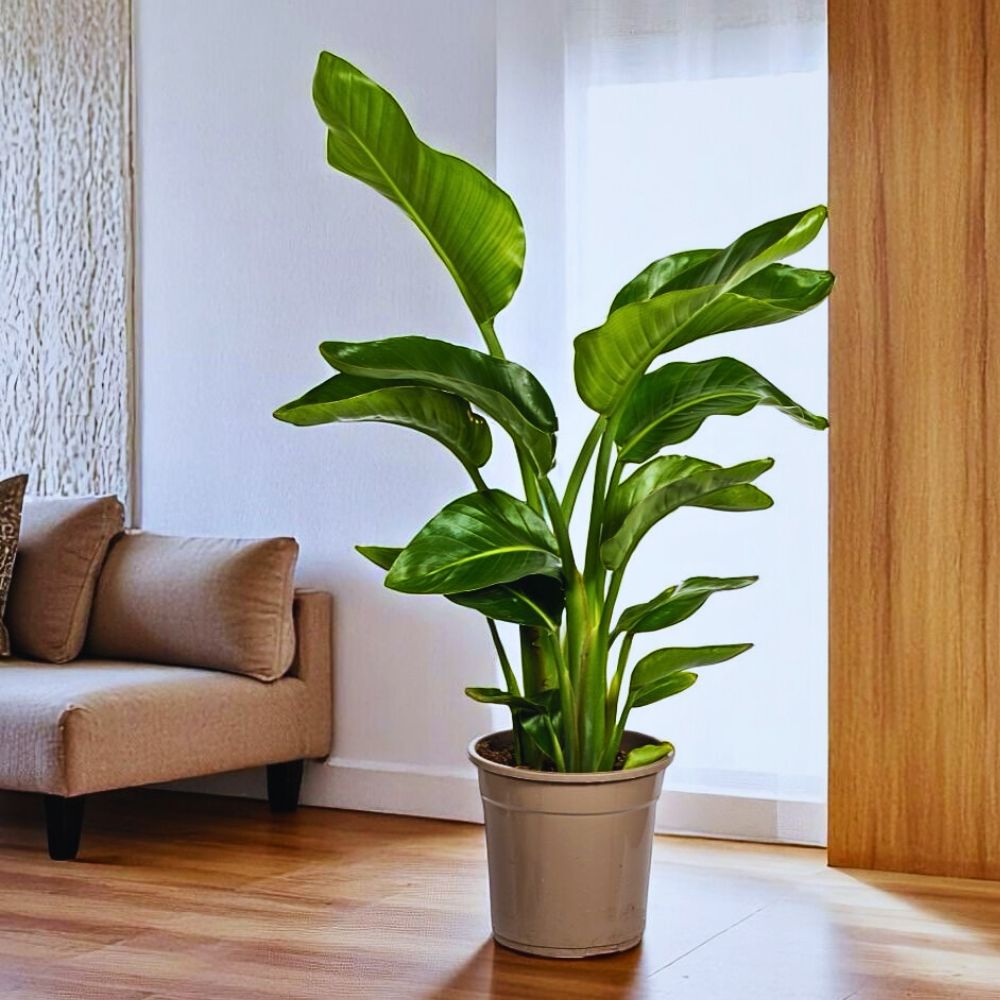
In terms of temperature, Strelitzia nicolai prefers warm conditions. They thrive in temperatures ranging from 18°C to 29°C (5°F to 85°F). Although the plant can tolerate temperatures slightly outside this range, it’s important to ensure it does not experience prolonged exposure to temperatures below 15°C (60°F), as this can stunt growth and damage the plant's leaves.
Sudden temperature drops can cause brown spots to appear on the leaves, while excessive heat might cause them to turn brown. Maintaining a balance between temperature and humidity is key to the proper care of your white bird of paradise. By providing these conditions, you ensure the giant bird remains healthy and vibrant, displaying its impressive size and unique beauty year-round.
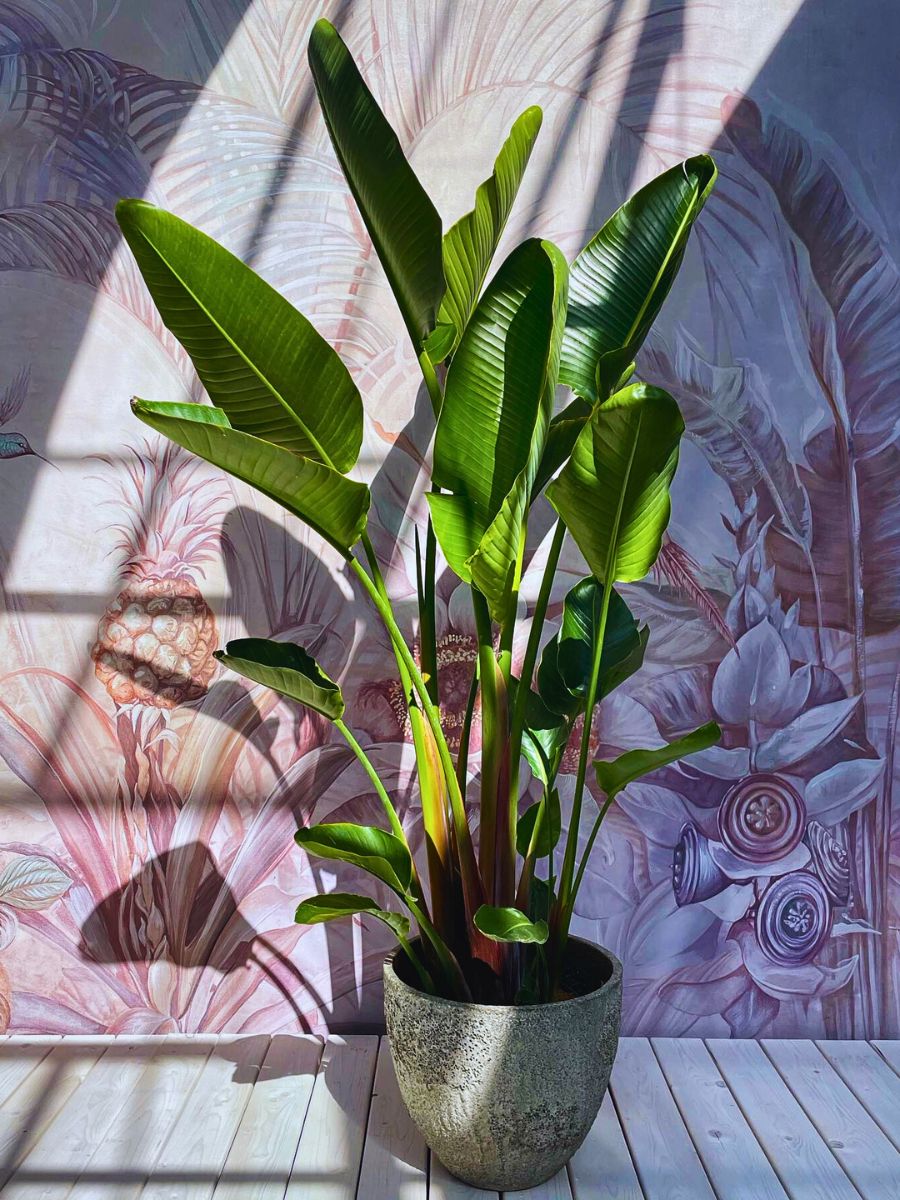
Trimming Leaves of White Bird of Paradise Plants
Trim away older leaves on the Strelitzia nicolai Bird of Paradise plant as they droop over time and develop more splits. New leaves always emerge from the center and keep the plant full and balanced. Regular trimming not only helps maintain the aesthetic appeal of your white bird of paradise but also encourages the growth of fresh, healthy leaves. When trimming, always use clean, sharp tools to prevent damage to the plant and reduce the risk of infection.

Split Leaves in Strelitzia Nicolai
Often, one of the nagging questions is: Should you worry when you see your Strelitzia nicolai's leaves splitting? The simple answer is no. For the giant white Bird of Paradise plant, splitting leaves is very normal and natural. The plant's 'damaged leaves' are an evolutionary adaptation that lets wind travel through the leaves, preventing them from acting as huge sails. As fresh leaves grow and fill out the plant, older ones that have more splits over time can be clipped.
If the plant appears to be splitting quickly, check its location to ensure it is not in a windy or drafty area and is getting enough light and water. Leaf splitting can also be stopped or slowed down by increasing the humidity around your plant with a humidifier or frequent misting. Ensuring that your Bird of Paradise plant is not exposed to strong winds and is placed in a spot with ample indirect light will help keep its leaves intact.
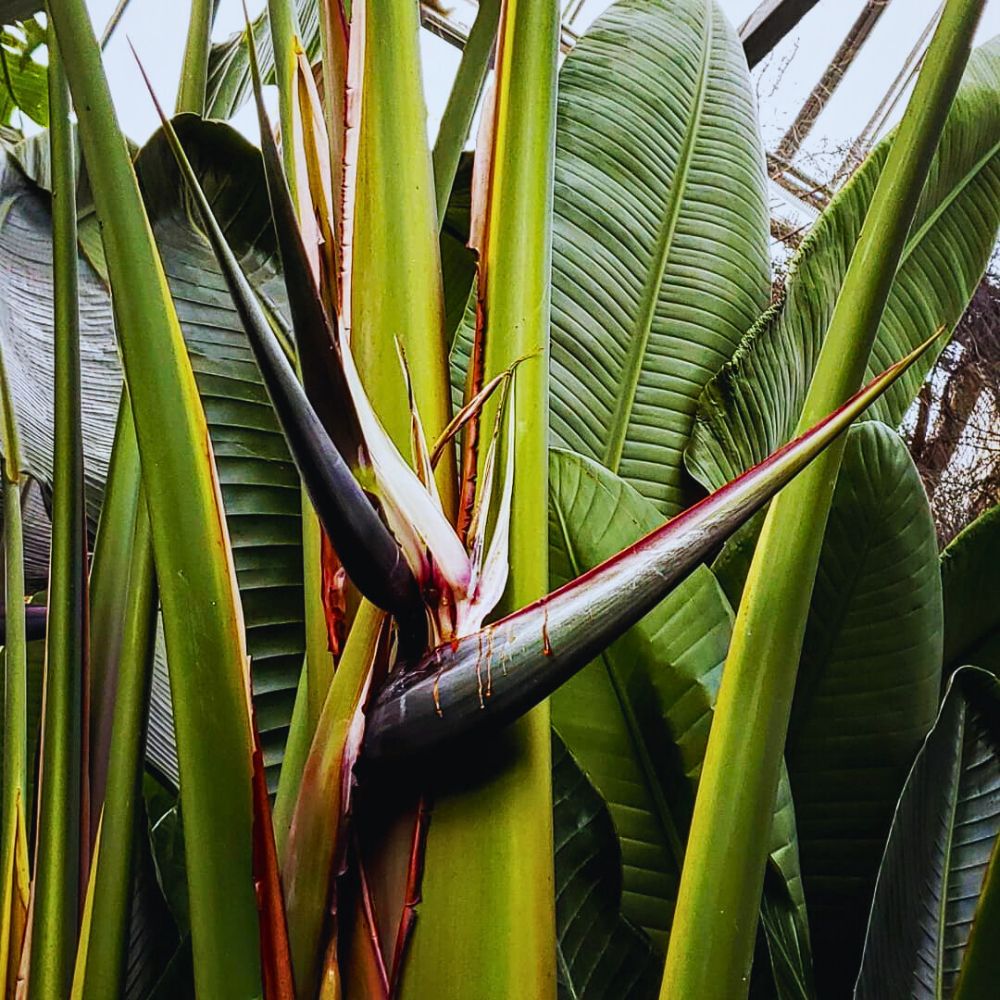
Repotting Strelitzia Nicolai
Strelitzia nicolai grows quickly; therefore, you should anticipate repotting your plant at least once a year until it reaches a plateau size and you need to start dividing it. Repotting plants involves more than simply increasing the size of the pots; it also involves giving the roots a thorough wash to check on their health and refilling the nutrient-depleted soil. This process helps prevent root crowding and ensures that your plant continues to thrive.
Therefore, it is a good habit to repot your Strelitzia anyway, even in the same pot, to refresh the soil, whether or not you believe it needs a bigger container with good drainage. Your plant will thrive in a well-draining potting mix or a fresh soil mixture that drains effectively. To improve drainage, you can purchase a base potting mix and add a significant amount of perlite or peat moss. This ensures proper drainage and helps avoid root rot, keeping your white bird healthy and vibrant.
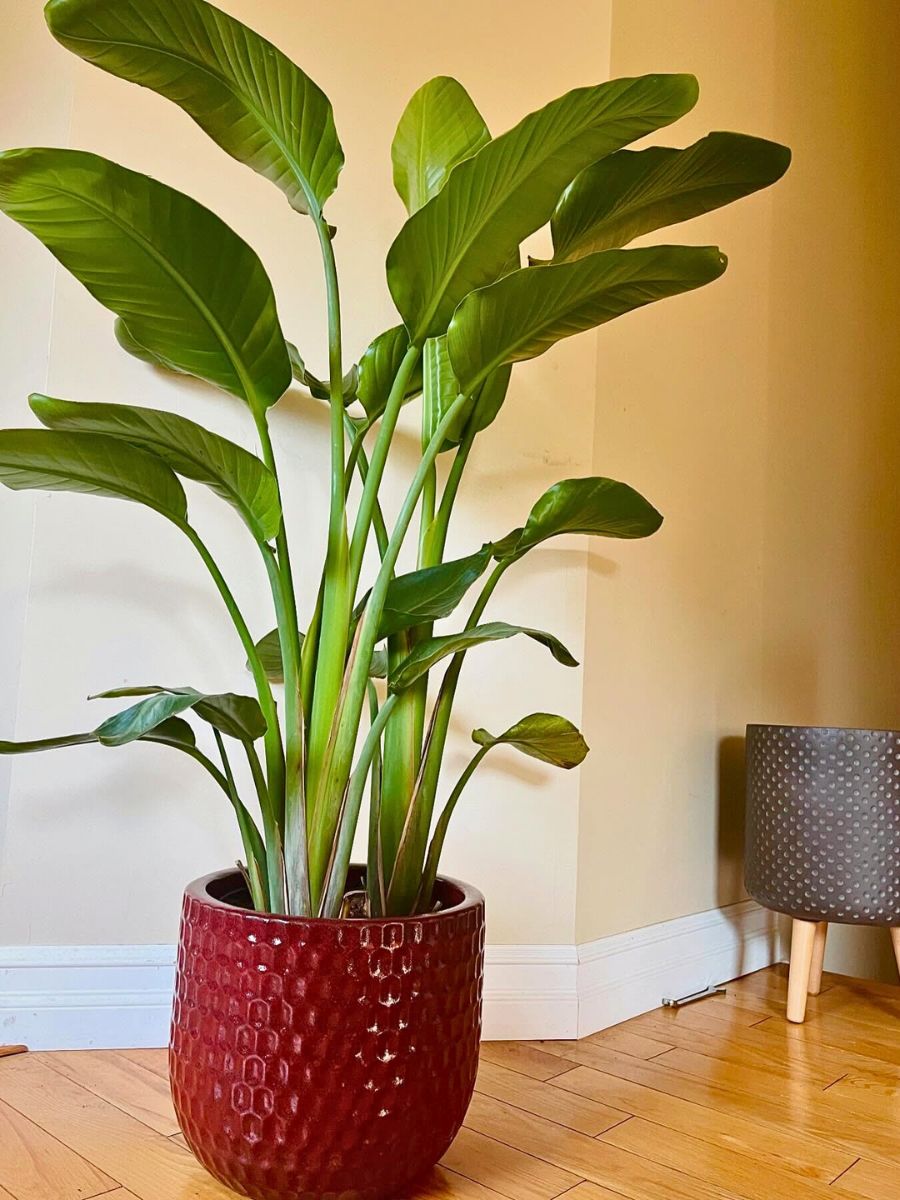
Propagating Strelitzia Nicolai
The best way to propagate your Strelitzia nicolai plant is by division. Of course, you could accomplish it using seeds or suckers, but the division methods work better. Your enormous Bird of Paradise plant may occasionally self-produce if you're lucky. Then, when the repotting season comes around, all you have to do is divide the rhizomes. This method allows you to expand your collection of these stunning paradise plants and share them with fellow plant enthusiasts.
White Bird of Paradise Is Healthy, as Well as Lucky!
To sum it all up, the white bird of paradise plant is more than just the greenery filling up your room. It is celebrated as a symbol of health and good fortune. Its ability to attain impressive growth, with minimal maintenance, also relates to its symbolism. It is also recognized for its purification of indoor air, effectively absorbing harmful toxins like formaldehyde and benzene, commonly found in household items.
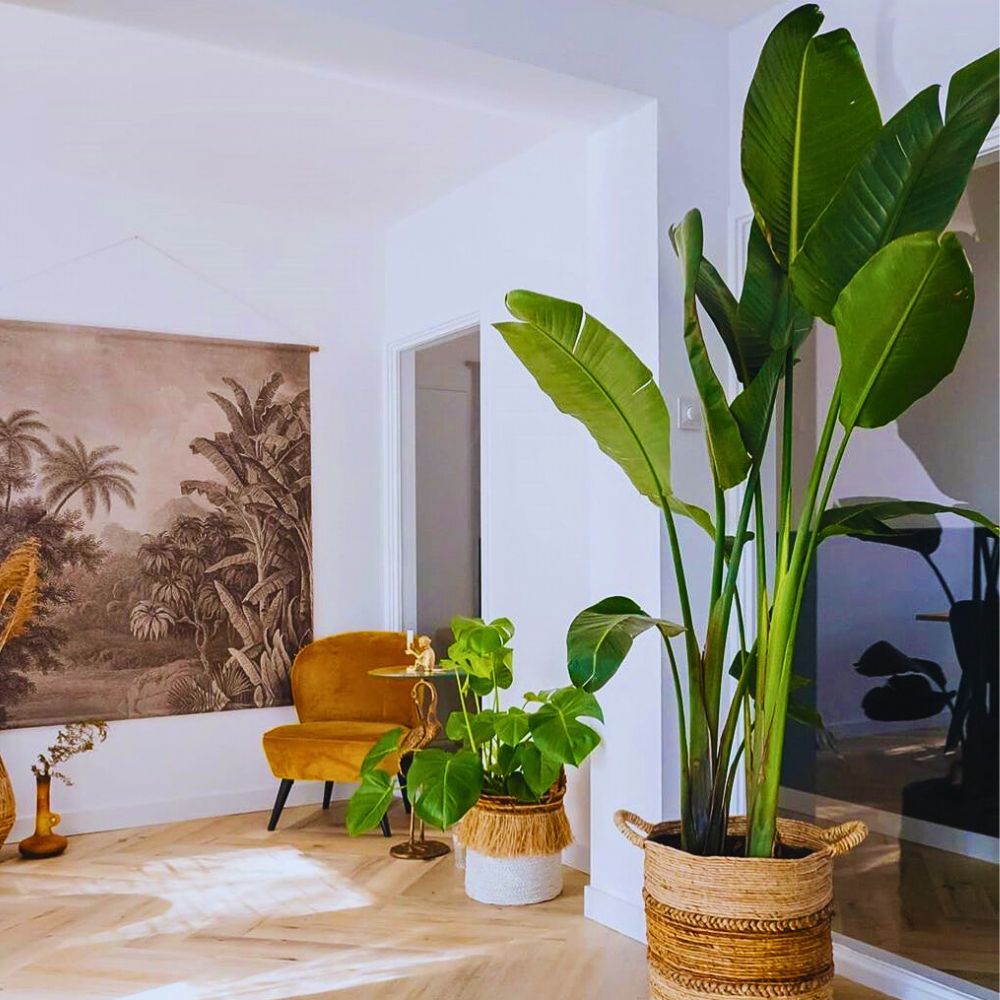
Even still, this tropical houseplant is also valued for its ability to attract positive energy and prosperity. According to feng shui practice, placing the plant in the eastern or southeastern parts of a home is recommended to maximize its beneficial effects. If you're looking to experience the exotic and tropical vibes easily, consider the Strelitzia nicolai. And Air So Pure has just the perfect plant for you.
Feature image by @airsopureplants, header image by @foreverplantsgroup.

